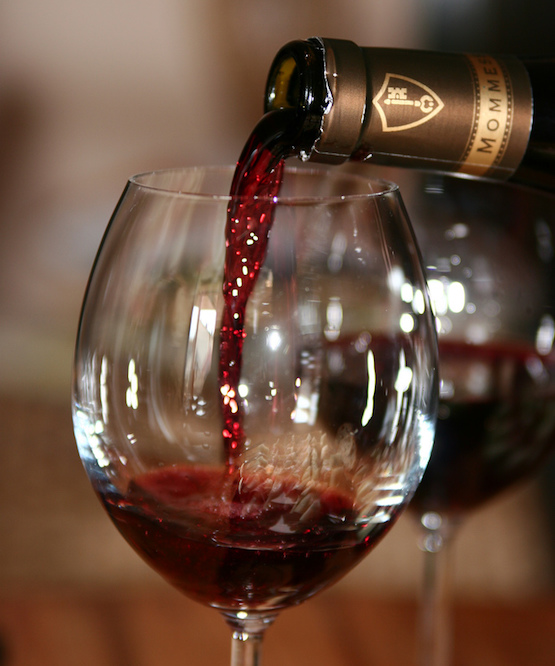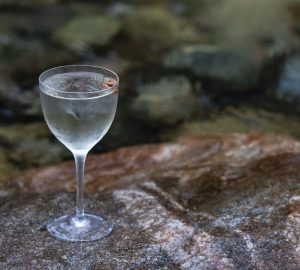Colour, smell and taste reveal much about a wine, says Ned Goodwin.
When studying for the notoriously challenging Master of Wine (MW) exam, I was confident that after many years of working as a sommelier in restaurants around the world, the tasting aspect of the exam would be the least challenging. How wrong I was! The facets of the exam demand a clear and systematic approach to each wine in the line-ups of 12 whites, reds and mixed wines respectively. One must write the equivalent of 10 to 13 A4 pages on varietal similarities, winemaking approaches, regional identifications and commercial propositions for particular styles, among other topics. I opted to identify, or try to come as close as I could to identifying each wine, at the outset. I noted a few aromatic traits, the use of oak (if any); the influence of malolactic fermentation; the nature of acidity, tannin and residual sugar; and finally, colour. This inferred, too, whether a wine was aged or still relatively youthful. Quality assessments were guided by the chaste acronym BLICC, which stands for ‘balance’, ‘length’, ‘intensity’, ‘complexity’ and ‘concentration’. Age-worthiness, too, could be incorporated into the complexity quotient to score further.
To winnow this down to a sensible approach when tasting wine in a non-exam setting, pick up a glass filled just below halfway. Hold it up and have a look at the colour. While I rarely pay much attention to colour unless a wine looks aged and in some cases, weary beyond its years, it is important to ask yourself if a wine looks healthy. A browning hue and turgidity, or “soupiness”, suggests that a wine may well be oxidised, “madeirised”, or a combination of these and thus, past its best, poorly stored and not particularly pleasant. Aside from grapes such as pinot noir, gamay, grenache or nebbiolo, which inherently have “lightish” pigmentation and a pallid hue as wine; or conversely, cabernet sauvignon, merlot or syrah, all of which have a darker gloss, colour reveals little to me beyond the obvious. Conversely, I know many MWs who pay a great deal of attention to colour, creating a myriad of descriptions for the various hues of wines and shades therein.
After opening the aromas of a wine with a swirl of the glass, smell it. I try to discern whether aromas are akin to red fruits such as sour cherry, strawberry or raspberry for red wines; or of a citric spectrum for whites, indicating the likelihood of cooler origins and bright, refreshing styles; or of darker fruits such as fig or plum for reds; summer fruits including apricot, peach and tropical fruits such as guava for white wines, suggesting warmer origins and with that, riper grapes, more body, capacity for oak handling and possibly, higher alcohol. Most of all, I smell a wine to determine if it is attractive. Do I stop at one sip, or does a wine spark the visceral urge to guzzle the whole bottle? If the latter, it is a good sign! Smelling a wine incorporates doublechecking for unattractive notes and faults, without obsessing over them. After all, searching for what is wrong, rather than what is right, is the signature of the wine boor. Be aware of “corkiness” (dries your mouth out and smells like your grandmother’s stale closet; excessive brettanomyces (dries your mouth out and reeks of horse shit); the use of oak (integrated, or too much); and volatile acidity (excessive and a wine will smell like vinegar).
I then taste a wine. Are the flavours attractive? Is there a beginning, middle and end? Is the wine texturally intriguing and again, how much of it do I want to drink? I look for a balance between structure (acidity, tannins and a wine’s other bony components) and fruit ripeness (a wine’s flesh, if you will). I want wine that is relatively clean, texturally interesting, neither under-ripe nor over-ripe and flabby, fresh and long of flavour. If a wine is too tightly drawn around its structural attributes, or bones as I like to call them, it likely needs time in a cellar, or a cool, dark space that does not exceed around 18 degrees. In essence, I want wines that feel good in my mouth. I covet wines that make me want to drink more than three glasses, rather than just the one. I yearn for wines that have an inimitable sense of place. The dry, structural focus of Italian reds, for example. Their stylistic patina cannot be replicated anywhere else in the world, even if the same grape varieties are used. Hunter Valley semillon, especially when aged; Loire Valley demisec expressions of chenin blanc and the great rieslings of the Mosel, straddling the tightrope of delicacy, tension and jewel-like transparency with uncanny ease, are all such examples.
The irony of studying so hard, for so long, is that the inherent simplicity of wine becomes as obvious as its idiosyncrasies and complexities. After all, I have learned that the greatest joy is a wine that slakes the thirst, piques one’s interest and brings enough pleasure to want to pour another glass and do it all over again, until the bottle is empty.
Ex-sommelier Ned Goodwin MW is an Australian wine writer, consultant and educator.








